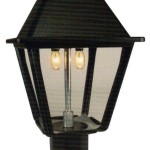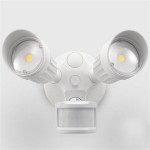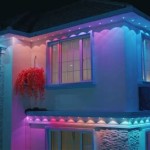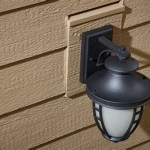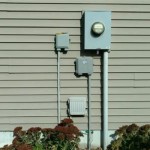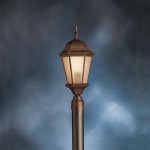How To Make Outdoor Lighted Candy Cane Decorations At Home
Creating festive outdoor decorations is a rewarding activity, particularly during the holiday season. Lighted candy canes are a classic and visually appealing choice for enhancing any outdoor space. This article provides detailed instructions on how to construct durable and illuminated candy cane decorations using readily available materials, enabling individuals to personalize their holiday displays. The focus will be on using homemade techniques to achieve a professional-looking result, while maintaining a safe and efficient construction process.
Before beginning the construction phase, it is crucial to gather all necessary materials and tools. This preparatory step minimizes interruptions and ensures a streamlined workflow. The following list outlines the essential items required for building lighted candy cane decorations. These materials have been selected for their cost-effectiveness, durability, and ease of use in creating weather-resistant outdoor displays.
Materials Required:
- PVC Pipes (1/2 inch or 3/4 inch diameter, depending on desired size)
- PVC Primer and Cement
- PVC End Caps
- Red and White Spray Paint (Exterior Grade)
- Clear Christmas Lights (LED recommended for energy efficiency)
- Zip Ties or Electrical Tape
- Measuring Tape
- Pencil or Marker
- Saw (PVC Cutter or Hacksaw)
- Drill (Optional, for securing lights)
- Sandpaper (Optional, for smoothing PVC edges)
- Gloves and Eye Protection
With the necessary materials collected, the process of constructing the candy canes can commence. Each step is detailed below, providing clear instructions and helpful tips to ensure a successful project. Precise measurements and careful execution are key to achieving a consistent and aesthetically pleasing final product.
Step 1: Cutting and Preparing the PVC Pipes
The initial step involves cutting the PVC pipes to the desired length. The length will determine the overall size of the candy cane. A standard length for outdoor decorations ranges from 3 to 5 feet, but this can be adjusted to suit individual preferences and available space. Using a measuring tape and marker, accurately mark the cut points on the PVC pipes. Secure the pipe firmly before cutting to ensure a clean and straight cut. A PVC cutter is the preferred tool for this task, as it provides a smooth, burr-free edge. Alternatively, a hacksaw can be used, but it may require additional sanding to remove any rough edges.
Once the pipes are cut, it is recommended to smooth any sharp edges using sandpaper. This step enhances safety and improves the overall finish of the decorations. Next, apply PVC primer to the ends of the pipes where end caps will be attached. Allow the primer to dry completely before applying PVC cement. Firmly press the end caps onto the primed and cemented ends of the pipes. The end caps provide a finished look and prevent water from entering the pipes, which could damage the internal lights.
Step 2: Painting the Candy Cane Stripes
The next step involves painting the PVC pipes to create the characteristic red and white stripes of a candy cane. Before painting, ensure the PVC pipes are clean and dry. It is advisable to work in a well-ventilated area and to wear gloves and eye protection to avoid direct contact with the spray paint. Begin by applying a base coat of white spray paint to the entire pipe. Allow the paint to dry completely according to the manufacturer's instructions. Multiple thin coats are preferable to one thick coat, as this helps to prevent drips and ensures even coverage.
Once the white base coat is dry, use masking tape to create evenly spaced stripes along the length of the pipe. The width of the stripes can be customized to personal preference, but a standard width is typically between 2 and 4 inches. Ensure the masking tape is firmly adhered to the surface to prevent paint bleed-through. Apply red spray paint to the exposed areas between the masking tape. Again, use multiple thin coats to achieve a consistent and vibrant color. Allow the red paint to dry completely before carefully removing the masking tape. If any paint bleed-through occurs, it can be carefully touched up with a small brush and white paint.
Step 3: Installing the Lights and Shaping the Candy Cane
With the painting complete, the next step is to install the clear Christmas lights inside the PVC pipe. Begin by feeding the string of lights through one end of the pipe until the entire length is filled with lights. LED lights are recommended due to their energy efficiency and longer lifespan. Carefully arrange the lights inside the pipe to ensure even distribution. The end of the light string with the plug should be left accessible for easy connection to a power source.
To secure the lights inside the pipe and prevent them from shifting, zip ties or electrical tape can be used. Secure the light string to the inside of the pipe at several points along its length. This will help to maintain a consistent and illuminated appearance. While optional, a drill can be used to create small holes along the PVC pipe to provide additional points for securing the lights with zip ties. Ensure the holes are small enough to not compromise the structural integrity of the pipe.
The final step involves shaping the candy cane into its characteristic curved form. While PVC pipe is relatively rigid, it can be bent with the application of heat. A heat gun, carefully controlled, can be used to soften the PVC pipe, allowing it to be bent into the desired shape. It is crucial to exercise extreme caution when using a heat gun, as excessive heat can melt or deform the PVC pipe. Apply heat gradually and evenly, constantly monitoring the pipe's flexibility. Once the pipe is sufficiently pliable, gently bend it into the desired candy cane shape.
If a heat gun is not available, an alternative method involves gradually bending the pipe over time. This can be achieved by securing one end of the pipe and applying gentle pressure to the other end over a period of several days. While this method is less precise and requires more time, it eliminates the risk of overheating the PVC pipe. Once the desired shape is achieved, secure the candy cane in place to maintain its form. The decorated candy canes are now ready to be displayed outdoors, adding a festive touch to any holiday setting.
Maintaining the lighted candy canes will prolong their lifespan and ensure continued visual appeal. Regularly inspect the decorations for any signs of damage, such as cracks in the PVC pipes or frayed electrical cords. Replace any damaged components promptly to prevent further deterioration. During periods of inclement weather, it may be advisable to temporarily remove the decorations to protect them from strong winds or heavy snowfall. Proper storage during the off-season will also help to preserve the decorations for future use. Store the candy canes in a dry, protected location, away from direct sunlight and extreme temperatures. By following these maintenance tips, the homemade lighted candy cane decorations will provide years of festive enjoyment.

Lighted Pvc Candy Canes Diy Home Decor Show Off Decorating And Improvement Blogdiy Blog

Lighted Pvc Candy Canes Diy Home Decor Show Off Decorating And Improvement Blogdiy Blog

Diy Lighted Candy Cane Urns Add Whimsy Debbee S Buzz

How To Make A Lighted Pvc Candy Cane Decoration Ehow

How To Make A Lighted Pvc Candy Cane Decoration Ehow

Diy Decoration Candy Cane Lane

How To Make Diy Giant Candy Cane Lawn Decoration

51 Stunning Diy Outdoor Decorations Outside

Diy Light Up Candy Canes Bright Decorations Outdoor

Lighted Pvc Candy Canes Diy Home Decor Show Off Decorating And Improvement Blogdiy Blog
Related Posts
